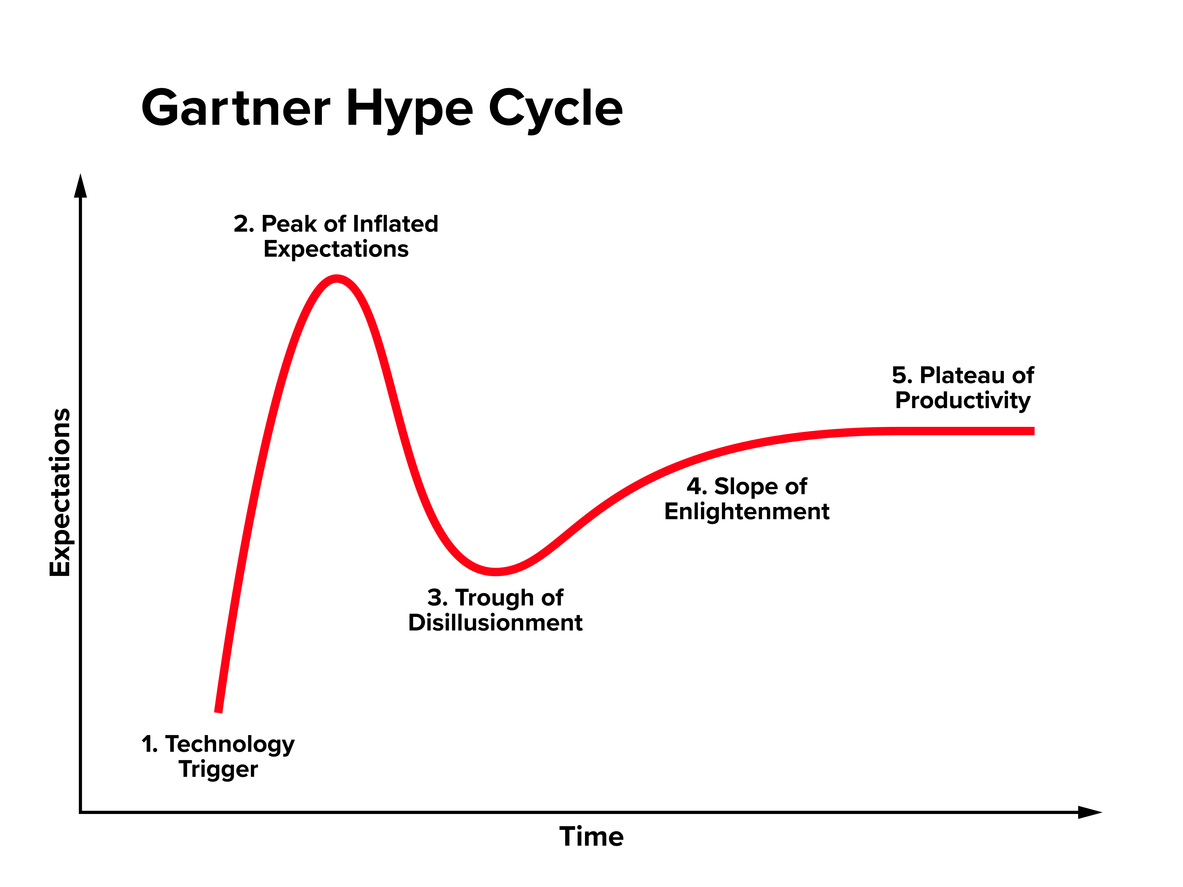
Christie Lagally is the founder and CEO of Rebellyous Foods, a plant-based chicken manufacturing and technology company based in Seattle, Washington.
The views expressed in this article are the author’s own and do not necessarily represent those of AgFunderNews.
In 2021, many declared the peak of the hype cycle of the alt-meat industry’s rise and investment was coming to an end.
The signs were there. In the years just before, a high volume of venture capital flooded into alt-meat companies. The technology advancements such as Impossible’s heme for burgers and the first cultivated chicken breast were brought to market. These were significant achievements and should be remembered as such.
Simultaneously, the number of companies in the space rose rapidly, and venture firms were quick to invest in many of them. With climate change bearing down on us, and a global pandemic raging, the writing was on the wall that the meat industry was seemingly ripe for disruption. Or was it?
By 2022, the downward fall of alt-meat was clickbait for reporters, and few could resist telling the story of how entrepreneurs and investors risked their time and money on the hype only to see the disruption fail to materialize. Some companies closed, fell into bankruptcy, stagnated without investment, or were rolled up as pseudo-acquisitions to try to save the remnants of failed, albeit noble, efforts.
Magical thinking
Then the explanations started coming. For some, it was comforting to view this food industry trend as following the curve of the well-known Silicon Valley Gartner Hype Cycle because it would mean that such investments weren’t completely in vain and the industry would recover, hopefully.
But three years later, the low point on the hype cycle seems to still not have been hit, leaving many to wonder where the bottom could be. When will recovery happen, and when will mainstream stabilization occur? These questions are asked with the undertone of a belief that this industry is destined to recover along a known path. But that thinking is as magical as the initial hype itself.
There are plenty of technologies that follow the Gartner technology hype cycle path, from high expectations to a fall from grace and a low point where naysayers declare their accuracy, and advocates cling to optimism. From that low point, and with time, adoption, according to this theory, is supposed to stabilize, with expectations metered and the original logic of the technology coming into acceptance.
If this is the case for alt-meat, we should see consistent mainstream adoption any day now, three years on from our collective fall from grace. But are we? Or was the technology hype cycle ever the right model for alt-meat? Should we expect a recovery or sustained mediocrity?

The conventional meat industry didn’t follow a hype cycle
The global meat industry didn’t follow a hype cycle. While people have always eaten meat, the industry itself consolidated initially in the 1700s, as farms got bigger. It wasn’t till the early 1800s that the first meat-packing plants were built to feed the growing concentration of people in cities. By 1827, the first slaughterhouses were constructed, and 1877 brought the first refrigerated rail cars to move meat (instead of animals) to the population centers. By the 1900s we first saw concentrated chicken operations and feed lots, and the 1950-60s brought about automated meat production that has consistently advanced through today.
Animal genetic refinement and better chemistry serving factory farms brought about consistent increases in meat availability at lower prices than ever before. At no time along this journey has meat consumption seen a significant drop in popularity, with the exception of serious economic events that caused meat prices to rise and demand to fall. There was no hype cycle. In fact, the biggest predictor of meat consumption is simply the price of meat, which has fluctuated over the last century, and it is the only mitigator to date of meat consumption shown to work due to the size and scale of the meat industry.
If alt-meat is supposed to be the disruption for conventional meat, then we must see that not all such alternatives are equivalent. Cultivated meat takes a considerable mindset change from raising the cow to raising the cow cells and assembling them into burgers, but the end product is basically indistinguishable. Such food processing is common in every segment of the food industry.
Plant-based meat technology didn’t have a hype cycle; investment did
Plant-based meat in contrast has been around for nearly 2,000 years in many different forms. Since the availability of meat became somewhat common, so did the alternatives. And such alternatives gained market traction around the same time as meat production, albeit with drastically different outcomes.
In earliest written history, Buddhists in China and Indonesia came up with ingenious ways to replace meat with plant-based alternatives. By the 1800s, health advocates, such as John Harvey Kellogg, who knew of the detrimental impacts of meat on human health, developed the earliest commercially available meat alternatives. But it wasn’t until the onslaught of industrial meat production in the early 1900s that the development of meat alternatives started to accelerate. With early efforts to isolate protein from plants through fractionation, and texturize protein via spinning and shearing methods, the plant-based meat industry had an early start alongside industrialized meat.
That effort continued into the 1960s, 70s and 80s with some brands like Morningstar Farms developing new products, often aimed at the vegetarian and health-conscious consumer.
By the early 2010s the beginnings of what we call today the alt-protein hype cycle began. As the undeniable potential impact of meat industry disruption came into focus, in part due just to the size of the meat industry itself, so did investor excitement in the industry. However, the technology itself followed a slow, growing path that started with the earliest protein fractionation in the 1920s. This technology didn’t have a hype cycle, just the investment did.
The Gartner hype cycle model is not relevant for our future
So what does this mean for us now? The alt meat industry is believed to be in a slump, with only a small fraction of capital available to advance the technology or grow businesses. When viewed as the “trough of disillusionment”, the projected outcome is even bleaker, as ground must be first made up to get to a plateau, and few companies are approaching sustainable profitability.
While the hype cycle may prove to be correct, and perhaps we’ll see the slope of enlightenment, for the builders of this industry who are betting on that enlightenment, a recovery may come too late. The risk of waiting for recovery is another path of decline.
As a CEO of a plant-based meat start-up, I have seen firsthand the highs and lows of our industry. And based on this, I believe the Gartner hype cycle model is not relevant for our future, and perhaps only vaguely modeled the recent decades of growth. It is certainly not in the interest of anyone in our industry to expect a recovery from the trough of disillusionment. Meat alternatives are still missing meat’s greatest assets: low cost and massive scale. No “slope of enlightenment” should be assumed by the investor, consumer or industry watcher.
No magic formula, just discipline and focus
Instead, the alt-meat industry must grow the same way the meat industry did. Year by year, step by step, animal by animal, product by product. The model is not Garner’s hype cycle; it’s the 20 mile march, a concept explained by Jim Collins in Great by Choice. It’s the incremental brick-by-brick approach, weathering the storms and keeping your eye on the ball. It is the best practice from Jim Collins research on how any company becomes great: No magic formulas. No flashy diversions. Consumers have relatively simple needs in a complex world. The need for protein is all about economics. No enlightenment is needed.
What alt-meat needs now more than ever are good business leaders and good technologists who understand that building a sustainable company takes discipline and focus. We need to understand that innovation must be persistent and applied research is about firing bullets first, then cannon balls (another of Collins’ concepts).
The brightest minds in the industry may each have a small piece of the future puzzle, but like throwing spaghetti against the wall, they must be tested in the marketplace to determine if they will stick. Innovation on taste, texture, extraction, protein sources and production technology are obviously necessary, and when combined with the market, they illuminate the future path of the industry.
Facing ‘brutal facts’
In my seven plus years of building a startup, I have never seen a situation where hype, trends, prevailing winds, or models helped to predict or guide our actions in a chaotically changing world where positive impact is sought. Hence I see no rationale for using the technology hype cycle to predict the future of our industry. A true rational prediction lies within our intentions.
Will we address the consumer demand for cost parity? Will we make products more accessible? Will we achieve quality at scale? Will we continue to innovate, relentlessly, and listen to the results? Will we face the brutal facts and change direction to follow where they take us?
These are the predictors of our success, and if the answer is “yes” then our efforts will create the future. It’s more magical thinking to trust in a model for industry recovery that has no basis in the reality of our industry’s past, present or foreseeable future. At Rebellyous, we say, “Build the change you want to see in the world.” As such, the future of the alt meat industry will be determined by what we intentionally build it to be.






